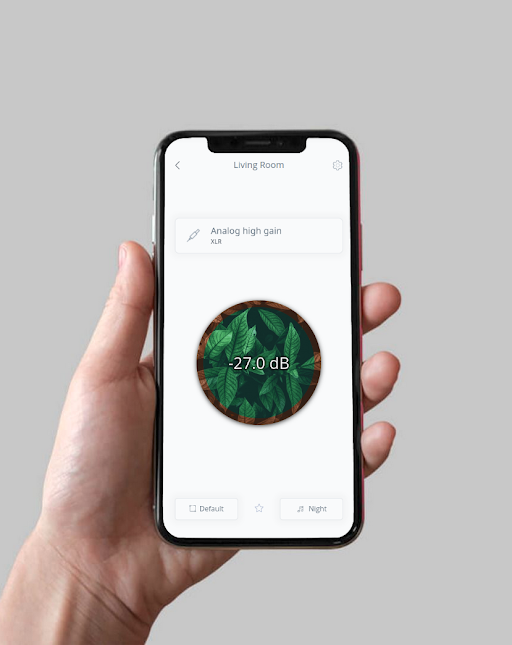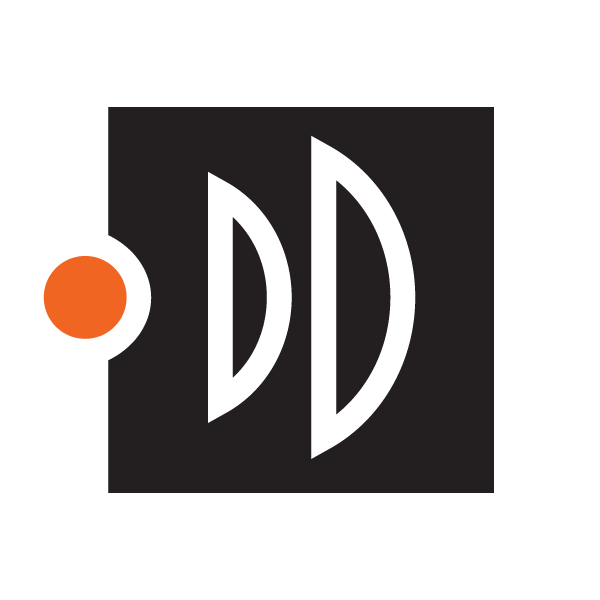Technology.
The sound quality in your room is primarily determined by your speaker and how they interact with your room.
At Dutch & Dutch, this is where we focus our efforts. In its essence, the 8c is a system that is designed to integrate seamlessly into your room.
To achieve that, we’ve developed a number of technologies, such as:
- Acoustic Cardioid Midrange
- Boundary Coupled Bass
- Minimum Diffraction Waveguide
- Room matching

Cardioid
How we make the room disappear
Boundary Coupled Bass
How we make destructive waves become constructive.
The 8c’s have two high-excursion woofers in the back of their cabinets. These woofers operate below 100 Hz only. Inspired by the work of the late speaker designer Roy Allison, the 8c is designed to leverage Boundary Coupling. Boundary Coupled Bass (BCB) offers three main advantages:
- Boundary coupling avoids the destructive interference between the speaker’s direct sound and the boundary reflection.
- Low-frequency headroom is increased by up to 6 dB.
- Increased directivity in the bass, for a good directivity match between the Boundary Coupled Bass and the cardioid midrange, which takes over above 100 Hz.


The 8c’s have pre-programmed settings that let the 8c’s easily adapt to a specific distance between the back of the 8c and the front-wall (in accordance with the professional and scientific literature, we call this wall the front-wall: listener-orientation is the reference, not the speaker’s). The best results are obtained by placing the 8c’s between 10 and 50 cm from the front wall.
The distance presets in the 8c assume a solid wall. Only if the 8c is placed in front of a solid and rigid wall, does Boundary Coupled Bass work exactly as predicted: the 8c’s bass drivers acoustically couple to the front-wall, and the 8c and the wall effectively combine to become one single source. This combined 8c/wall-system radiates sound in a phase-coherent hemispherical pattern. The preset that corresponds with the actual distance between the back of the 8c and the wall, does two things: 1) it assures that the 8c/wall-system and the cardioid midrange driver in the 8c’s front baffle are time-aligned; and 2) it makes sure that the 8c together with the wall has flat frequency response.
Solid Wood
The 8c’s outer cabinet is crafted from 20 mm thick solid oak panels. Every oak panel is unique and therefore each 8c has its own unique appearance. During the manufacturing process, we match cabinet pairs, to ensure 8c’s of a pair have a similar look. However, no two 8c’s look exactly the same. We like our customers to be aware of this before buying.
Internally, the 8c is made out of birch plywood. It is used to create the separate compartments for the drivers and to brace the cabinet, in order to increase the stiffness and strength of the cabinet. This results in an acoustically inert cabinet, which ensures that all you hear is the sound of the loudspeaker drivers.
Solid wood is a living material that continuously changes over time. Under the influence of changes in temperature and humidity, the wood will expand and contract. Hairline cracks are normal with solid wood, and thus to be expected. However, the 8c’s cabinet construction is carefully studied and fine-tuned, in order to avoid breakage as the wood ages.


Intuitive Control - Ascend App
After the 8c’s are automatically discovered on your LAN, you’ll have full control of settings like gain, distance to front and side walls, updates and many parametric filters. Internet connectivity is not required. Available on iOS, Android, and PC
Multi-Room Streaming with Roon and Spotify Connect
Besides balanced analogue or AES3 input, you are able to stream digital music directly to your 8c’s. Set up left and right positions using your mobile device and the rest is done automatically.
Within your LAN, 8c’s can be grouped into multiple zones. Perfectly synchronized music can then be played effortlessly in those zones.
Specifications
COMPONENTS
LF: 8″ High Excursion Subwoofer (2x)
MF: 8″ Mid-Range Driver
HF: 1″ Alloy Dome Tweeter
ENCLOSURE TYPE
LF: Sealed
MF: Passive Cardioid
FREQUENCY RESPONSE
30 Hz – 20 kHz ± 1 DB
AMPLIFIER POWER
LF: 500 W
MF: 250 W
HF: 250 W
DIMENSIONS (H x W x D)
485 x 270 380 MM
WEIGHT
26 KG

